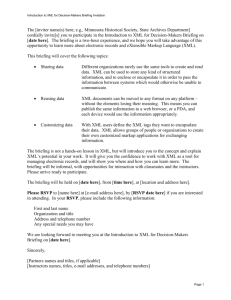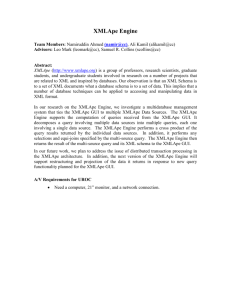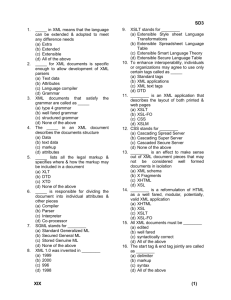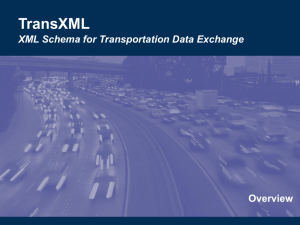The Development of Units Markup Language
advertisement
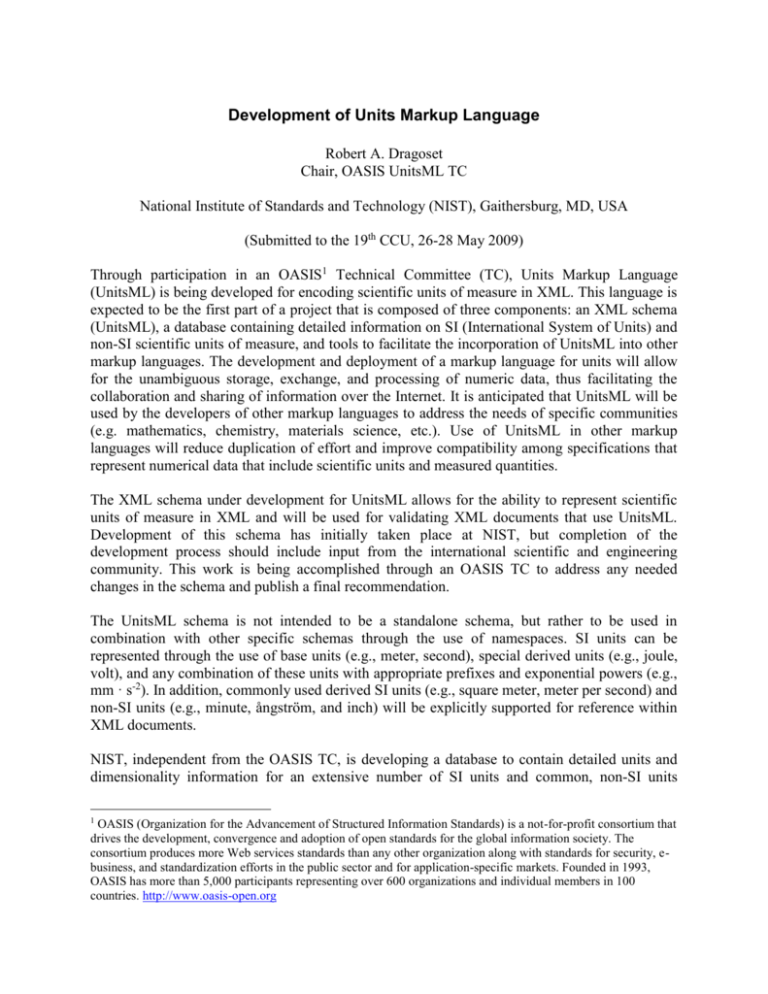
Development of Units Markup Language Robert A. Dragoset Chair, OASIS UnitsML TC National Institute of Standards and Technology (NIST), Gaithersburg, MD, USA (Submitted to the 19th CCU, 26-28 May 2009) Through participation in an OASIS1 Technical Committee (TC), Units Markup Language (UnitsML) is being developed for encoding scientific units of measure in XML. This language is expected to be the first part of a project that is composed of three components: an XML schema (UnitsML), a database containing detailed information on SI (International System of Units) and non-SI scientific units of measure, and tools to facilitate the incorporation of UnitsML into other markup languages. The development and deployment of a markup language for units will allow for the unambiguous storage, exchange, and processing of numeric data, thus facilitating the collaboration and sharing of information over the Internet. It is anticipated that UnitsML will be used by the developers of other markup languages to address the needs of specific communities (e.g. mathematics, chemistry, materials science, etc.). Use of UnitsML in other markup languages will reduce duplication of effort and improve compatibility among specifications that represent numerical data that include scientific units and measured quantities. The XML schema under development for UnitsML allows for the ability to represent scientific units of measure in XML and will be used for validating XML documents that use UnitsML. Development of this schema has initially taken place at NIST, but completion of the development process should include input from the international scientific and engineering community. This work is being accomplished through an OASIS TC to address any needed changes in the schema and publish a final recommendation. The UnitsML schema is not intended to be a standalone schema, but rather to be used in combination with other specific schemas through the use of namespaces. SI units can be represented through the use of base units (e.g., meter, second), special derived units (e.g., joule, volt), and any combination of these units with appropriate prefixes and exponential powers (e.g., mm · s-2). In addition, commonly used derived SI units (e.g., square meter, meter per second) and non-SI units (e.g., minute, ångström, and inch) will be explicitly supported for reference within XML documents. NIST, independent from the OASIS TC, is developing a database to contain detailed units and dimensionality information for an extensive number of SI units and common, non-SI units 1 OASIS (Organization for the Advancement of Structured Information Standards) is a not-for-profit consortium that drives the development, convergence and adoption of open standards for the global information society. The consortium produces more Web services standards than any other organization along with standards for security, ebusiness, and standardization efforts in the public sector and for application-specific markets. Founded in 1993, OASIS has more than 5,000 participants representing over 600 organizations and individual members in 100 countries. http://www.oasis-open.org available for access by the general public and specifically by users of UnitsML. A database resource of this type would facilitate wide use of the markup language by including information needed to reference units in an XML document, specifically including unique identifiers, various unit symbols, language-specific unit names, and representations in terms of other units (including conversion factors). In addition to scientific units, this database will include information about quantities - the measurable, countable, or comparable properties or aspects of a thing, e.g., length. Four snippets of UnitsML from an example instance document are shown below illustrating markup for a derived unit with a prefix (mm/s2), quantity (acceleration) and dimension (L1 · T-2). <Unit xml:id="U_mm.s-2" dimensionURL="#D_L.T-2"> <UnitSystem name="SI" type="SI_derived" xml:lang="en-US"/> <UnitName xml:lang="en-US">millimeter per second squared</UnitName> <UnitSymbol type="HTML">mm &#183; s<sup>-2</sup></UnitSymbol> <RootUnits> <EnumeratedRootUnit unit="meter" prefix="m"/> <EnumeratedRootUnit unit="second" powerNumerator="-2"/> </RootUnits> <QuantityReference quantityURL="#Q_acceleration" name="acceleration" xml:lang="en-US"/> </Unit> ... <Prefix xml:id="P_m" prefixBase="10" prefixPower="-3"> <PrefixName xml:lang="en-US">milli</PrefixName> <PrefixSymbol type="HTML">m</PrefixSymbol> </Prefix> ... <Quantity xml:id="Q_acceleration" dimensionURL="#D_L.T-2" quantityType="derived"> <QuantityName xml:lang="en-US">acceleration</QuantityName> <QuantitySymbol type="HTML"><i>a</i></QuantitySymbol> </Quantity> ... <Dimension xml:id="D_L.T-2"> <Length symbol="L" powerNumerator="1"/> <Time symbol="T" powerNumerator="-2"/> </Dimension> Additional information can be found on the OASIS UnitsML TC public page: http://www.oasis-open.org/committees/tc_home.php?wg_abbrev=unitsml and the NIST UnitsML Website: http://unitsml.nist.gov/index.html


![[#CARBON-13743] Key store password of catalina](http://s3.studylib.net/store/data/007841975_2-b5be293be17dfbfd4fa5374476b625ea-300x300.png)
